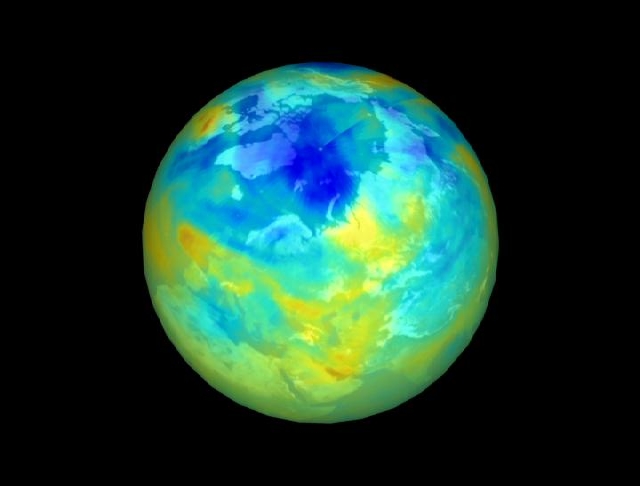Grade Level(s):
- College
Source:
- UC Museum of Paleontology
Resource type:
- Science Story
Discipline:
- Earth science
- Physical Sciences
Time: 2 hours
Overview
Follow a group of scientists from around the world as they work together to understand - and then help fix - a problem that threatens the future of the planet: a hole in the ozone layer. Get tips for using science stories in class.

- [What is science?: Grades 13-16] Scientists strive to test their ideas with evidence from the natural world; a hallmark of science is exposing ideas to testing.
- [What is science?: Grades 13-16] Scientific knowledge is open to question and revision as new ideas surface and new evidence is discovered.
- [What is science?: Grades 13-16] Science is ongoing; answering one scientific question frequently leads to additional questions to be investigated.
- [How science works: Grades 13-16] The real process of science is complex, iterative, and can take many different paths.
- [How science works: Grades 13-16] The process of science involves observation, exploration, testing, communication, and application.
- [How science works: Grades 13-16] Scientific observations can be made directly with our own senses or may be made indirectly through the use of tools.
- [How science works: Grades 13-16] Scientists test their ideas (hypotheses and theories) by figuring out what expectations are generated by an idea and making observations to find out whether those expectations are borne out.
- [How science works: Grades 13-16] Scientists can test ideas about events and processes long past, very distant, and not directly observable.
- [How science works: Grades 13-16] All scientific tests involve making assumptions, but these assumptions can be independently tested, increasing our confidence in our test results.
- [How science works: Grades 13-16] Scientists test their ideas using multiple lines of evidence.
- [How science works: Grades 13-16] Scientists use multiple research methods (experiments, observational research, comparative research, and modeling) to collect data.
- [How science works: Grades 13-16] Researchers share their findings with the scientific community through scientific publications.
- [The social side of science: Grades 13-16] Scientists scrutinize each other's work through peer review and other processes.
- [The social side of science: Grades 13-16] Science relies on the accumulated knowledge of the scientific community to move forward.
- [The social side of science: Grades 13-16] The scientific community is global and diverse.
- [Science and society: Grades 13-16] Scientific research is often focused on topics with the potential to help meet societal needs.
- [What has science done for you lately: Grades 13-16] Scientific knowledge helps us make decisions that affect our lives every day.
- [What has science done for you lately: Grades 13-16] Scientific knowledge informs public policies and regulations that promote our health, safety, and environmental stewardship.
